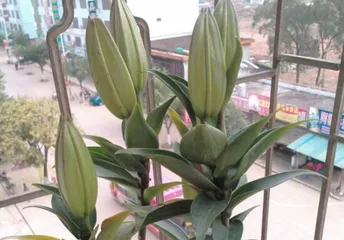Lilies are very beautiful flowers, and many people like to grow them at home or in the garden. However, when transplanting lilies, many people do not know how to water them. This issue is a very important part of the lily care process. Here we will introduce in detail the watering techniques for lilies after repotting.

One: Understand the lily's water preference
Lilies need an appropriate amount of water during their growth process. However, since they grow in mountainous areas and prefer a humid environment, they need to maintain a certain level of humidity. Proper watering can ensure that lilies grow healthily, but too much water will lead to root rot.
Two: Pay attention to the timing of watering
After transplanting lilies, you should start watering them on the second day. The moisture in the soil is already sufficient at the time of transplanting, so there is no need to water immediately. The best time to water is in the early morning or evening, which can avoid the evaporation of water under direct sunlight.

Three: What to pay attention to when watering
When watering, you should use a spray nozzle or a watering can to spray slowly and evenly to avoid depressions or bumps on the soil surface. At the same time, you should control the amount of water to avoid too much water flowing into the flowerpot.
Four: How to deal with excess water
If you overwater, some excess water will be left in the soil. At this time, you should use absorbent paper or dry soil to absorb it in time. Avoid the accumulation of excess water, which can cause root rot.
Five: Keep the soil moist
Lilies need to maintain a certain level of humidity. After repotting, you should water an appropriate amount every day to keep the soil moist. However, be careful not to water too much to avoid root rot.

Six: Points to note for watering in summer
In summer, the temperature is higher, and lilies need more water. In hot weather, you should often water an appropriate amount to keep the soil moist. However, be careful not to water too much to avoid root rot.
Seven: Water moderately in winter
In winter, the temperature is lower, and lilies need less water. At this time, you should appropriately reduce the frequency of watering, just keeping the soil moist is enough.
Eight: Pay attention to the lily's growth period
The growth period of lilies is generally from spring to autumn. During this time, it is necessary to increase the frequency of watering to ensure that the lilies have sufficient water and nutrients.
Nine: Avoid exposure to strong sunlight
Lilies need an appropriate amount of sunlight, but too strong sunlight will cause the water in the soil to evaporate too quickly, leading to insufficient water for the lilies. Avoid exposing lilies to the scorching sun.
Ten: Pay attention to temperature
Temperature is also very important for the growth of lilies. If the temperature is too low, lilies will lose their vitality and wither. In winter, you need to take warming measures for the lilies.
Eleven: The impact of soil quality
Soil quality has a great impact on the growth of lilies. If the soil quality is poor, it will have a great impact on the growth of lilies. When repotting lilies, be sure to choose good quality soil.
Twelve: Change the water regularly
In the lily pot, the water also needs to be changed regularly. This can avoid the accumulation of stagnant water, which affects the growth of the flowers.
Thirteen: Fertilize appropriately
Appropriate fertilization can provide necessary nutrients for lilies. However, it is necessary to control the amount of fertilizer to avoid burdening the lilies.
Fourteen: Prune in a timely manner
Timely pruning of lilies can keep them in a healthy growth state. At the same time, pruning can also prepare for the next stage of growth.
Fifteen:
Watering is an indispensable part of the lily care process after repotting. Proper watering can provide the necessary water and nutrients for lilies, but it also requires attention to issues such as the timing, method, and amount of watering. Only by correctly mastering these techniques can you ensure that lilies grow healthily.